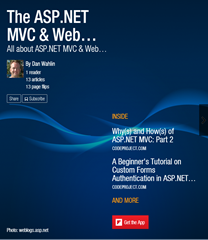New Pluralsight Course: Integrating Angular with ASP.NET Core RESTful Services
I’m excited to announce the release of my new course on Pluralsight titled Integrating Angular with ASP.NET Core RESTful Services! This course follows up my previous course which focused on Angular and Node.js. The code in this new class covers ASP.NET Core 2.0 or higher and Angular 4 or higher. As with my previous course, I’ll walk you through the process of using Angular to call into RESTful services and perform CRUD (Create, Read, Update and Delete) operations in an application to allow a user to view and modify data. However, in this course the services are built using C# and […]






